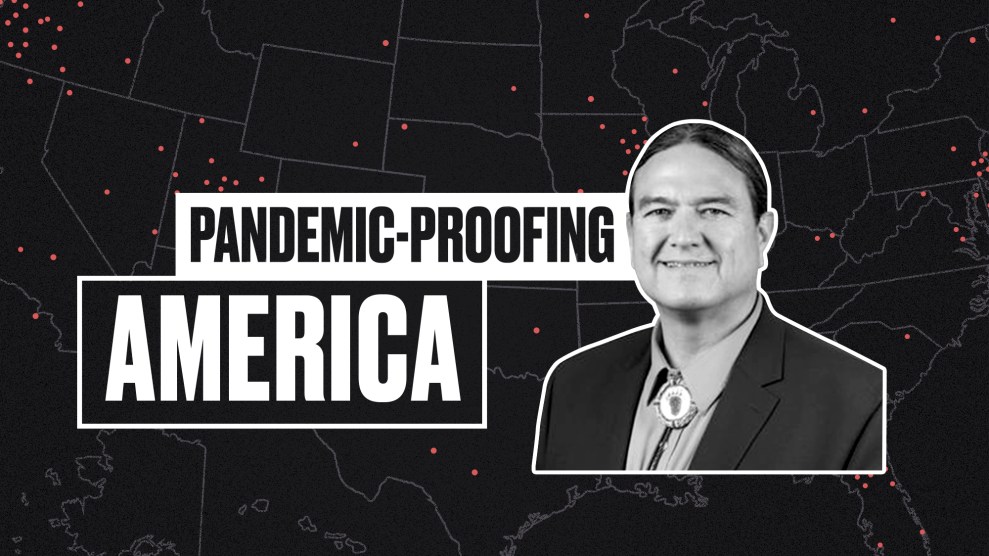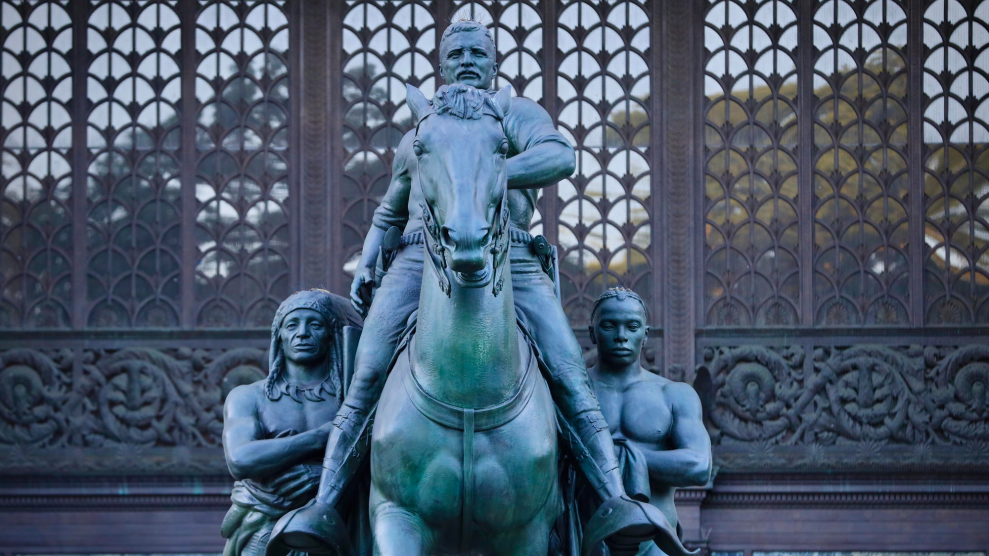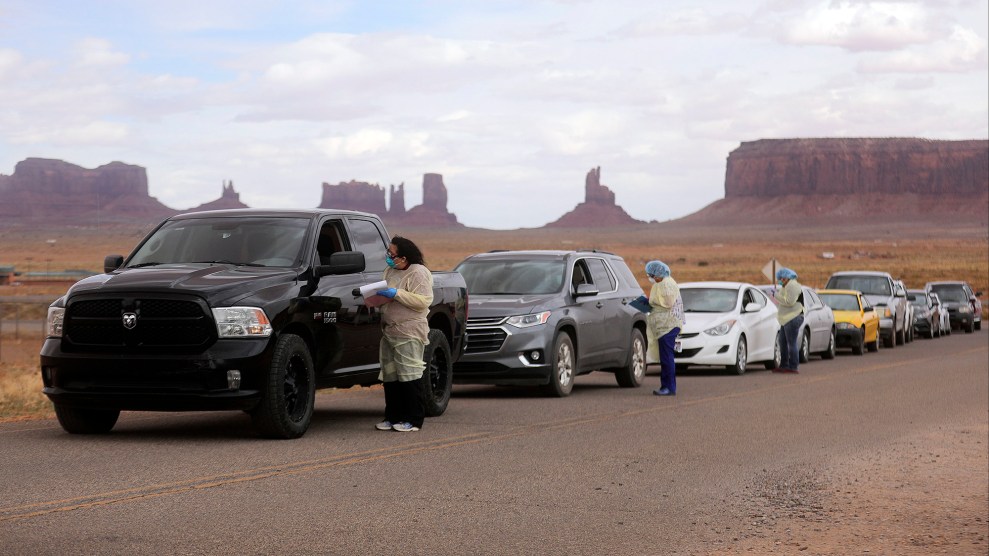
Navajo Nation has been one of the US regions hit hardest by COVID-19.Brian van der Brug/Getty
When the H1N1 pandemic struck in 2009, epidemiologist Aurimar Ayala was working at the Maricopa County Public Health Department in Arizona. The department serves millions of people in the greater Phoenix area and handles about 80,000 reports of communicable disease infections per year. Each time someone in the county tested positive for the virus, Ayala’s team would see the result in a statewide data system, which included information allowing them to call patients and identify anyone they may have infected. Though they couldn’t investigate each one, the team ended up with a dataset of 6,000 cases, helping them track and limit the virus’s spread through their county. With that data, Ayala was able to do good epidemiology.
Today, she leads a similar team at the California Tribal Epidemiology Center, one of 12 offices serving Native American communities across the United States. Yet in this role, her work is not so simple. While both county health departments and tribal epidemiology centers (TECs) are classified as “public health authorities” eligible to receive sensitive data under federal law, the state of California only shares its full infectious disease data with counties, leaving Ayala’s team to scrounge through the redacted data that’s publicly shared online. Because that data omits names, phone numbers, and consistent race and ethnicity information, the TEC is “completely unable” to trace and contain COVID-19 outbreaks in the under-resourced tribes that rely on the center’s support, Ayala says. “We know we are missing a lot of communities that are seeing increased transmission.”
She’s not alone in her frustration. As Indigenous and other communities of color bear the brunt of COVID-19, tribal epidemiologists across the US are struggling to access potentially life-saving information: several of the 12 TECs have reported paltry responses to their requests for data. These centers are prepared to fight the virus with public health messaging, contact tracing, and population surveillance in Native communities—if only they knew where to focus. Without the data, the virus is allowed to spread not only within tribes, but throughout the general public as well. And tribal advocates say data withholding may violate tribes’ sovereignty and treaty rights; some leaders are prepared to take legislative and legal action to get the information they need.
Tribal epidemiology centers were founded in 1996 to help Native communities measure the success of local health programs and track progress in meeting disease reduction goals set by Congress. TECs function like other public health departments: They help tribes in their regions collect and analyze statistics on everything from COVID-19 and diabetes, to flu shots and dental care. When a tribe is struggling with a health issue, it might ask its TEC to help fund a community-based intervention or identify which demographics are most affected. TECs’ important place in the health of Native communities was recognized in 2010, when the Affordable Care Act designated tribal epidemiology centers as “public health authorities” for the first time.
Data is crucial to this work. It is used to locate disease hot spots, track the spread of infections, and understand which health interventions are successful in specific communities. When the Great Plains Tribal Epidemiology Center found high rates of substance abuse among incarcerated women from South Dakota reservations in 2017, it worked with local officials to create culturally relevant behavioral health programs for Indigenous women leaving jail. And when the Northwest Tribal Epidemiology Center identified that Native voices had not been heard in the input process used to establish Oregon’s statewide health priorities, it helped launch a survey to correct the under-representation. TECs’ data services help tribes address cancer rates, poor nutrition, falls among the elderly, and more.
But gathering data is harder than it seems, says Christy Duke, the long-time director of the United South and Eastern Tribes TEC, which serves a population of more than 80,000 Native Americans in a region covering 13 states and more than 36 tribes. That’s partly because Natives receive care from a patchwork of federal, tribal, and private facilities, many of which don’t share Native patients’ results with TECs, if they identify Native patients at all.
When a patient is tested for the coronavirus, for instance, the lab sends their results to their state, the Centers for Disease Control and Prevention, and the facility where the patient was seen. Tribal-run facilities are likely to, in turn, report that result directly to their regional TEC. But many Natives are seen at federal Indian Health Service clinics, which rely on a system that Duke describes as antiquated and hamstrung by lack of federal funding. The computer software is clunky and difficult to use, and on top of that, IHS clinics don’t report directly to TECs but to the national IHS system; cases are often missed or inputted incorrectly. All this means that regional reports from the IHS miss too many cases for good epidemiological analysis.
And if a Native patient is seen at a private facility, their result may never reach tribal epidemiologists at all. Since such facilities are unlikely to be aware of, let alone report to, their regional TEC, their results often only end up in the hands of states and the CDC—which aren’t sharing critical information with tribal centers.
That’s been the experience of Abigail Echo-Hawk, who directs the Urban Indian Health Institute, which serves the 71 percent of Natives who live in cities. Echo-Hawk says the CDC has given her team just a “sliver” of the COVID-19 data they’ve asked for. In May, she and several members of her team had a conference call with the CDC’s Case Surveillance Task Force to discuss the data collection problems. But in response to their requests, a member of the task force tried to explain basic epidemiology—to Echo-Hawk’s team of highly trained epidemiologists.
The incident exemplifies the “paternalistic attitude with which Indigenous people are treated in this country,” a major barrier to productive collaboration, says Echo-Hawk. In an email she shared, sent two months after the call, a CDC staffer cited privacy concerns as their reason for withholding identifiable case information and said an agreement with the Council of State and Territorial Epidemiologists permits data be sent only to the Indian Health Service, which is not allowed to share it with others—even though, as Echo-Hawk points out, the CDC itself published a report stating the 2010 designation of TECs as “public health authorities” removed all obstacles to giving them data. Two CDC staff members disregarded appeals to this special legal status of TECs, and in May, one CDC epidemiologist asked Echo-Hawk if data collection was an issue for other TECs, blatantly unaware of the huge frustrations shared nationwide. (The CDC did not return a request for comment.)
Echo-Hawk could be using that information to identify where Native-specific interventions are needed to stop the virus’s spread. “I have one of the best teams in the country to do small populations analysis,” she says. “If they could just do that, and I could just direct that—instead of having to spend all this time fighting for the data—how much more could we be doing for our communities?”
Some tribal centers have data-sharing agreements with state and local agencies, and they all get some information from the CDC and IHS. But there are often unexplained discrepancies, such as when the CDC recently reported 49 new deaths of American Indians and Alaska Natives in California for a period when the state reported only 32. Another problem is the rampant misclassification of Indigenous people in health records. The Northwest Portland Area Indian Health Board found about half of Natives were wrongly identified (most often as “white”) by hospitals in Washington and Oregon, a figure corroborated by a national CDC analysis of death certificates. When Native communities are under-represented in statistics, they don’t receive enough funding or PPE. “How is it even possible that our policymakers are making data-driven decisions for allocation of resources when their data is that bad?” asks Echo-Hawk.
With better data and more access to the raw data, Duke, of the United South and Eastern Tribes TEC, says her center could help its communities create targeted health messaging, apply for grants, and replace ineffective pandemic response programs with those more likely to succeed. Ayala could leverage her decade of experience to do contact tracing and real-time surveillance instead of lagging behind the curve. But the CDC won’t trust her or other TECs with the names or contact info of patients who test positive, and one of its epidemiologists said that “to capture outcomes more accurately,” it could only share month-old data.
It’s not just a matter of making life harder for Native epidemiologists: They argue that the federal government has a Constitutional obligation to collect and share this data. That’s because in acquiring Indigenous lands, US leaders inked hundreds of treaties promising to provide basic services, including health care, to tribes. These treaties led to the creation of the federal IHS, which along with the CDC funds tribal centers that provide free health services. Yet report after report shows Congress failing to support Native health. In 2015, the National Congress of American Indians estimated that the IHS receives less than 60 percent of the money it needs to support its basic services. This year, the agency’s own workgroup found its $6 billion budget would have to be increased eightfold to bring Native health care into parity with the rest of the country’s. (The CARES Act gave the IHS an extra $1 billion.)
Chronic neglect has left Indian Country with an almost total lack of pandemic response infrastructure, says Oglala Lakota doctor Donald Warne, director of the University of North Dakota’s Indigenous Health program. “Most of it needs to be built from the ground up.” Tribal epidemiology centers, Warne says, would be a good place to start.
Even pre-pandemic, Indigenous leaders argued that data sovereignty, the ability to both access and control the release of data about their populations, is already implied in their hard-won legal rights.
Sovereignty has also been at issue in South Dakota, where Gov. Kristi Noem is pushing two Lakota tribes to dismantle health checkpoints on their reservation borders. She says it’s illegal for them to slow traffic on state and federal highways, while tribes say the checkpoints have protected their communities from the kind of disastrous outbreak faced by the Navajo. In a pending federal lawsuit, the Cheyenne River Sioux Tribe holds that efforts to stop the checkpoints infringe on their right to govern their people and lands as a sovereign nation.
Native leaders and health advocates are considering taking legal action to access disease data, especially after CDC Director Robert Redfield testified before a House Committee on June 23 that centers would get what they requested “within the next one to two weeks.” (They still haven’t.) Litigation “shouldn’t be our only option,” says Echo-Hawk. “But it might be.” Meanwhile, eight senators and twelve representatives signed a July letter asking Redfield and the secretary of Health and Human Services to improve data-sharing with TECs, and on August 7, a bipartisan House coalition introduced legislation to force action on the issue within 30 days.
The centers “should be spoken in the same breath as the CDC and state and local health departments,” says Duke. She’s grateful that the United South and East Tribes TEC received $2 million of CARES Act funding for the next two years of pandemic response, but it’s not enough to build the long-term infrastructure they’d need for any future crisis. Just two staff members support health communications and education for tribes in the center’s 13-state region; with more funding, Duke envisions a much greater effort, with initiatives like mentoring Indigenous youth for careers in health.
Like Echo-Hawk, Ayala says red tape shouldn’t be obstructing efforts to save Indigenous lives. California health officials “need to recognize that tribes were here before the state was here, [and] should be part of the conversation,” she says. “This is an emergency. I don’t need data five years after the pandemic. I need it now. I need it yesterday.”

















